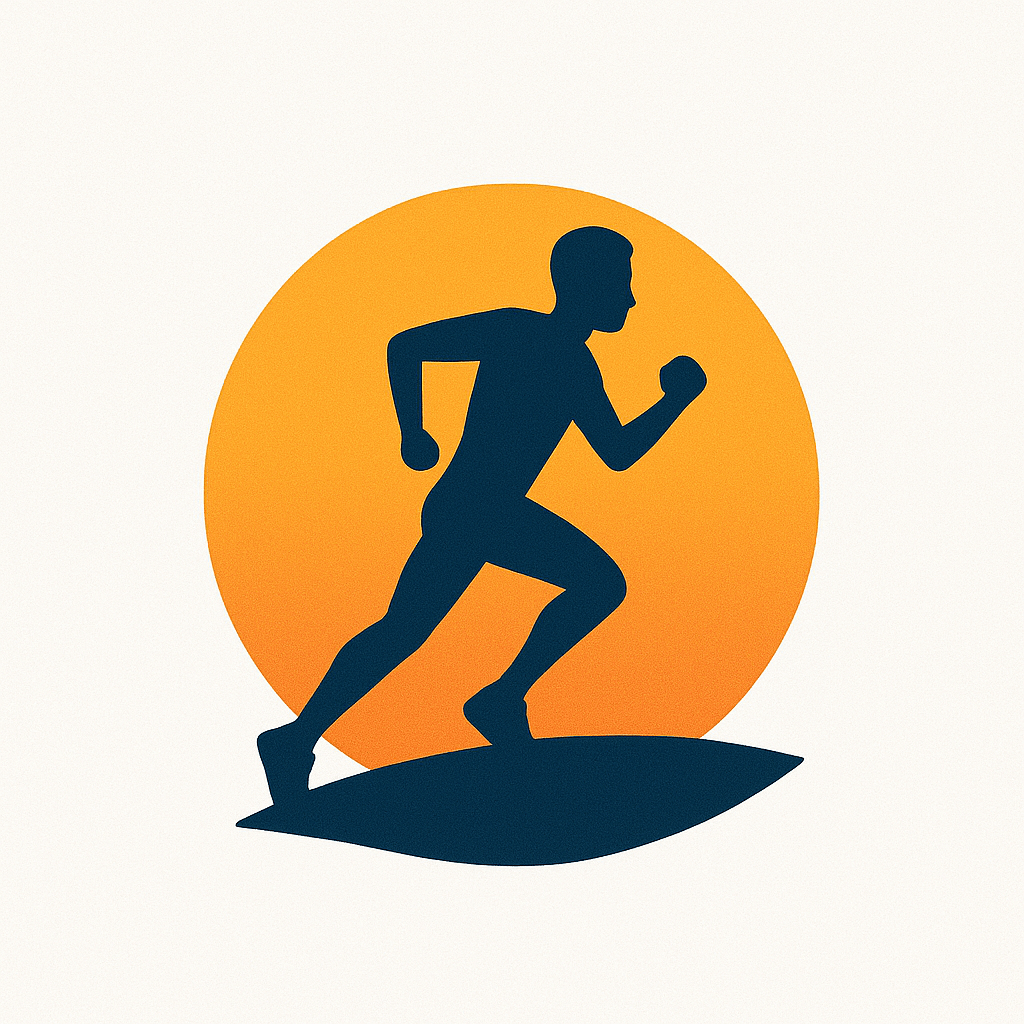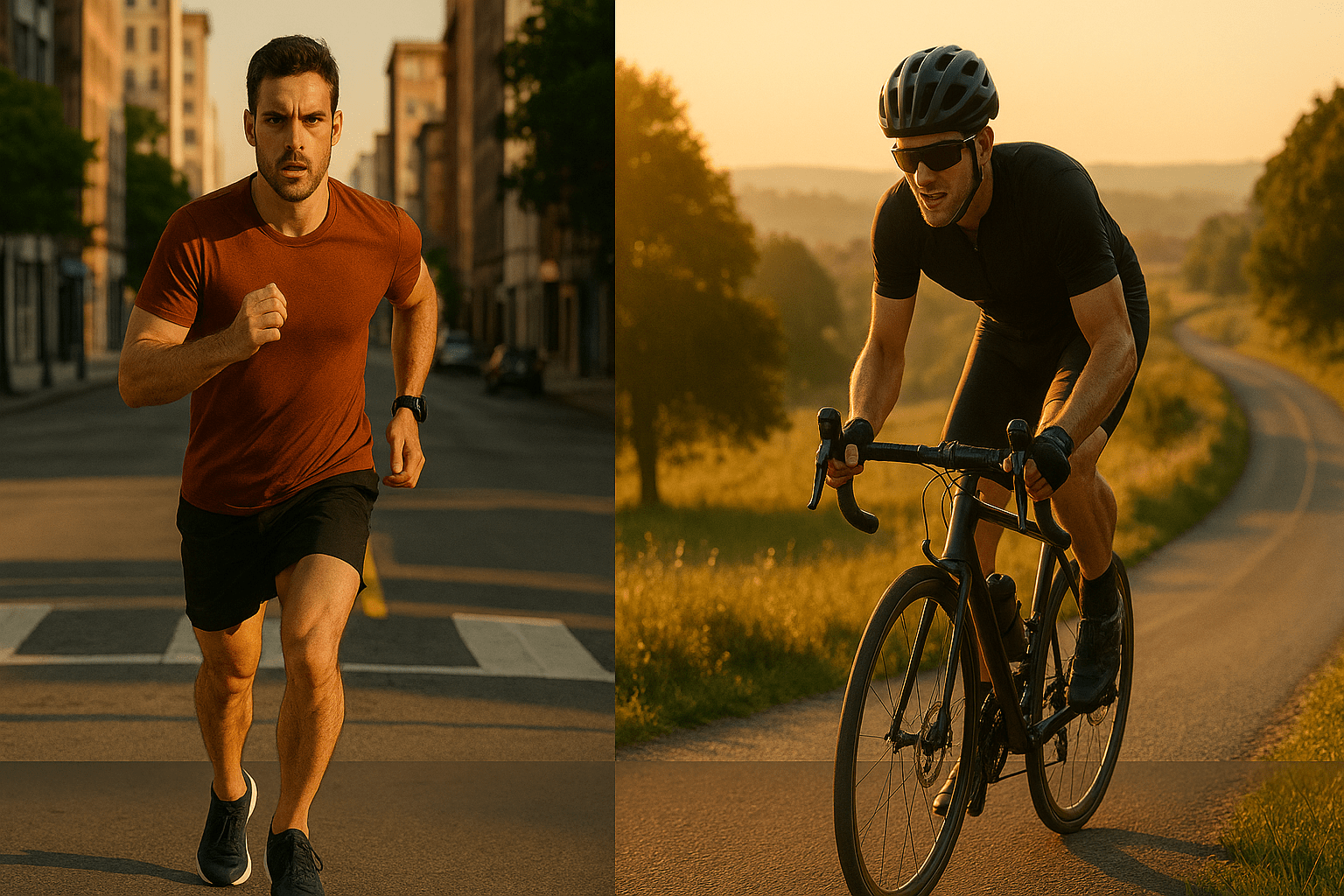🚦 Introduction: The Calorie Burn Showdown
You want to make your workouts count. Maybe you’re chasing fat loss, training for endurance, or simply trying to get the most return on your sweaty investment.
And you’ve heard it before: “Running burns more calories.” Or maybe: “Cycling’s easier on your joints.” So what’s the truth?
Whether you’re a runner, a cyclist, or someone trying to choose between the two, you deserve a clear, science-based answer. This isn’t just about numbers—it’s about understanding how each movement affects your body, your energy burn, and your overall fitness journey.
Let’s dive into the battle of the burn: running vs. cycling.
🔥 Calorie Burn 101 – What Actually Determines It?
⚖️ Key Factors: Intensity, Duration, Body Weight, and Terrain
Before we compare the two sports, let’s clarify how calorie burn actually works.
Calorie expenditure depends on:
- Intensity: How hard are you pushing?
- Duration: How long are you moving?
- Body weight: Heavier individuals generally burn more
- Terrain: Hills, wind resistance, and surface type all influence effort
This means two people doing the “same workout” may burn different amounts of calories—because their pace, effort, and physiology vary.
🏃 Running vs. 🚴 Cycling at Different Intensities
Here’s a general breakdown of average calories burned per hour for a 70 kg (154 lb) person:
- Running (8 km/h or 5 mph): ~480–550 kcal/hr
- Running (10 km/h or 6 mph): ~600–700 kcal/hr
- Running (12 km/h or 7.5 mph): ~750–850 kcal/hr
- Cycling (light, ~16 km/h or 10 mph): ~400–500 kcal/hr
- Cycling (moderate, ~20 km/h or 12–14 mph): ~600–700 kcal/hr
- Cycling (vigorous, >25 km/h or 16+ mph): ~800–1000+ kcal/hr
So yes—running typically burns more calories per minute, especially at moderate paces. But vigorous cycling can absolutely match or exceed that, especially if you maintain higher speeds, climb hills, or push through wind resistance.
🔥 The Afterburn Effect: Who Keeps Burning More Later?
Post-exercise calorie burn (aka EPOC—Excess Post-exercise Oxygen Consumption) refers to the energy your body uses to recover after a tough workout.
- High-intensity running, especially intervals or hill sprints, creates a stronger afterburn effect than steady-state cycling.
- Intense cycling, like spin classes or hill climbs, can also raise post-burn—but less than high-impact running.
So for calorie burn after your workout, running often has the edge—particularly if you’re doing speed work.
🧍 Running vs. Cycling – Beyond the Calories
💥 Impact on Joints, Muscles, and Long-Term Health
- Running is a high-impact activity. It builds bone density and strengthens joints—but also stresses them, especially knees and ankles.
- Cycling is low-impact and joint-friendly, ideal for injury recovery or those with mobility concerns.
From a muscular standpoint:
- Running builds lean leg and core strength, but mostly in endurance fibers.
- Cycling recruits more power from the quads and glutes, especially when climbing or riding in resistance.
Over time, both support cardiovascular health, but cycling might be gentler on the body for longer sessions.
💸 Accessibility, Cost, and Injury Risk
- Running requires minimal equipment—just good shoes and maybe a watch. It’s portable and efficient.
- Cycling involves bikes, maintenance, helmets, gear, and sometimes access to roads or trails.
When it comes to injuries:
- Running injuries are often repetitive strain: shin splints, IT band issues, plantar fasciitis.
- Cycling injuries are less common, but can involve lower back strain, knee pain, or crashes.
Injury risk often depends more on training load and form than the sport itself.
⚖️ What the Research Says About Fat Loss and Body Composition
Both running and cycling burn fat when paired with a healthy diet and consistent training. Studies suggest:
- Running may lead to quicker fat loss in the short term due to higher intensity and afterburn.
- Cycling supports steady, sustainable fat burn with less risk of overuse injury—great for longer sessions or heavier individuals.
Body recomposition comes down to total energy balance, not just workout choice. But running often creates a bigger immediate deficit—if your body can handle it.
🔀 Which One Should You Choose?
🎯 Goal-Based Decision Making (Fat Loss vs. Cardio vs. Endurance)
- For quick calorie burn or fat loss? Choose running.
- For long-duration cardio or lower-impact endurance? Choose cycling.
- For improving VO₂ max or heart health? Both are excellent.
Know what you want. Then match the movement to the mission.
🔁 Mixing Both for Maximum Benefit
Here’s the secret few talk about: you don’t have to choose.
Combining running and cycling:
- Reduces injury risk by varying impact
- Boosts performance by cross-training muscles
- Keeps your brain engaged through variety
Try alternating days, or cycling for recovery between harder run sessions. Many elite runners use cycling for low-impact aerobic gains.
🧘 Listening to Your Body: The Best Workout is the One You Can Sustain
The most effective workout? The one you do consistently and enjoy.
If cycling feels effortless and fun, it’ll serve you better long-term than forcing a run you dread. If running clears your head and grounds you, then keep lacing up.
Calorie charts are useful—but how you feel after the workout matters more than just numbers.
💪 Conclusion: Burn Smarter, Not Just Harder
So—runners or cyclists? Who wins the calorie crown?
Truth is: running typically burns more calories per minute. But intensity and consistency matter more than modality. A hard ride can torch calories. A sluggish jog might not. And vice versa.
This isn’t about picking sides. It’s about knowing your goals, listening to your body, and finding the movement that moves you.
Train hard. Train smart. And remember: every drop of sweat is progress—whether you’re pounding pavement or pedaling through the wind.






Leave a Reply